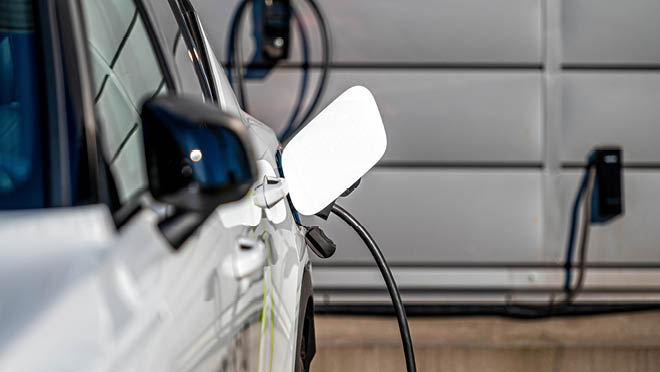How to install an EV charger at home

Steps to a successful installation at a single-family home
If you're a homeowner with an electric vehicle (EV), installing a Level 2 charger is a convenient way to ensure you always have a charge.
If you live in an apartment, condo or townhome complex, the steps are slightly different.
Find an electrician
Need help finding an electrician? Request an EV electrician referral from our Alliance of Energy Professionals to get in touch with qualified electricians.
Follow the steps below to complete your installation and apply for your rebate.
Installation steps
Step 1: Confirm you have sufficient electrical service
Start by assessing the electrical capacity available for EV charging at your home. We recommend hiring an electrician for this and your installation. They should review the past 12 months of your meter data to assess your spare electrical capacity.
This provides a more accurate assessment compared to the traditional load calculation method, which uses anticipated electrical load. Load calculation methods can result in a more conservative estimate, as well as unnecessary service upgrade recommendations.
You can download your most recent 12 months of meter data by logging into your MyHydro account.
Following their assessment, your electrician may suggest you get an EV power management device to optimize the capacity you have. If power management won't suffice, they may suggest that you need to upgrade your service to accommodate the charger. For service upgrades, contact BC Hydro's Express Connect team at 1 877 520 1355.
Dedicated meters for EV chargers
In some cases, your electrician may recommend installing a second separate electrical meter dedicated to your EV charger.
This would give you more flexibility when choosing an electricity rate plan. See step 8 for details.
Step 2: Purchase a charger
Choose and purchase an EV charger. If you plan on applying for a rebate, make sure you're selecting a model that qualifies.
Step 3: Select a location
Choose a location for the EV charger, ideally close to your parking spot and protected from the elements.
Step 4: Get an electrical permit
An electrical permit must be in place before the installation can begin. If an electrician is completing the work, they should apply for the permit. If you're doing the work yourself, you'll need to apply for the permit. Apply to your municipality (or Technical Safety BC) for an electrical permit.
Step 5: Install the charger and complete your permit
Install the EV charging station. If you've hired an electrician, they'll complete the electrical permitting process for you.
If you do the installation yourself, you'll need to submit a declaration form. You must submit this form after each phase of work is completed, or every 180 days, whichever comes first.
Complete the electrical homeowners inspection request form within 180 days of the date the permit was issued.
Step 6: Apply for an EV charger rebate
Single-family homes, row homes, and duplexes are eligible for rebates. Current rebates cover 50% of the cost to buy and install an eligible Level 2 EV charger, up to $350.
If you are planning to install a smart EV charger, you may be eligible for top-up funding. We're offering up to $250 for customers who install an eligible smart EV charger at home.
Step 7: Ongoing maintenance
Once installed, you'll need to ensure your charger and its connections remain in good working condition. Regularly checking for wear and tear, as well as cleaning connectors, can help maintain your charger. Talk to your electrician for advice on how often you should be checking the charger.
Step 8: Consider our tiered rate with time-of-day pricing
Opt into our time-of-day pricing for discounts on overnight (11 p.m. to 7 a.m.) home electricity use – including EV charging – and surcharges for on-peak (4 p.m. to 9 p.m.) usage.
This rate plan can save you money, while reducing demand on our electrical grid during busier periods.
If you have a second electricity meter dedicated to EV charging, you can choose time-of-day pricing for your EV meter only. This means you'd enjoy the benefit of discounted, overnight EV charging, without having to think about adjusting your other household usage during the more expensive, on-peak hours.